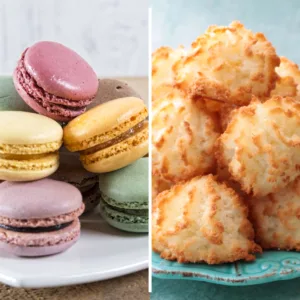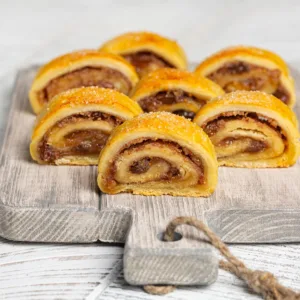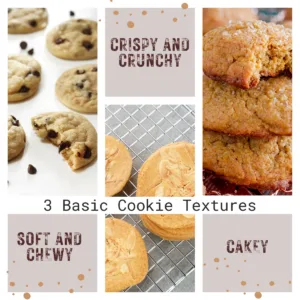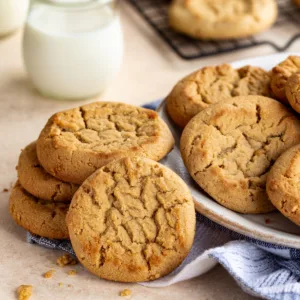When it comes to baking cookies, the type of flour you use can greatly impact the texture and taste of the final product. Different types of baking flours have varying protein content, gluten levels, and flavors, which can all affect the outcome of your cookies. In this article, we will explore the most commonly used types of flours for baking cookies and learn about their unique characteristics.
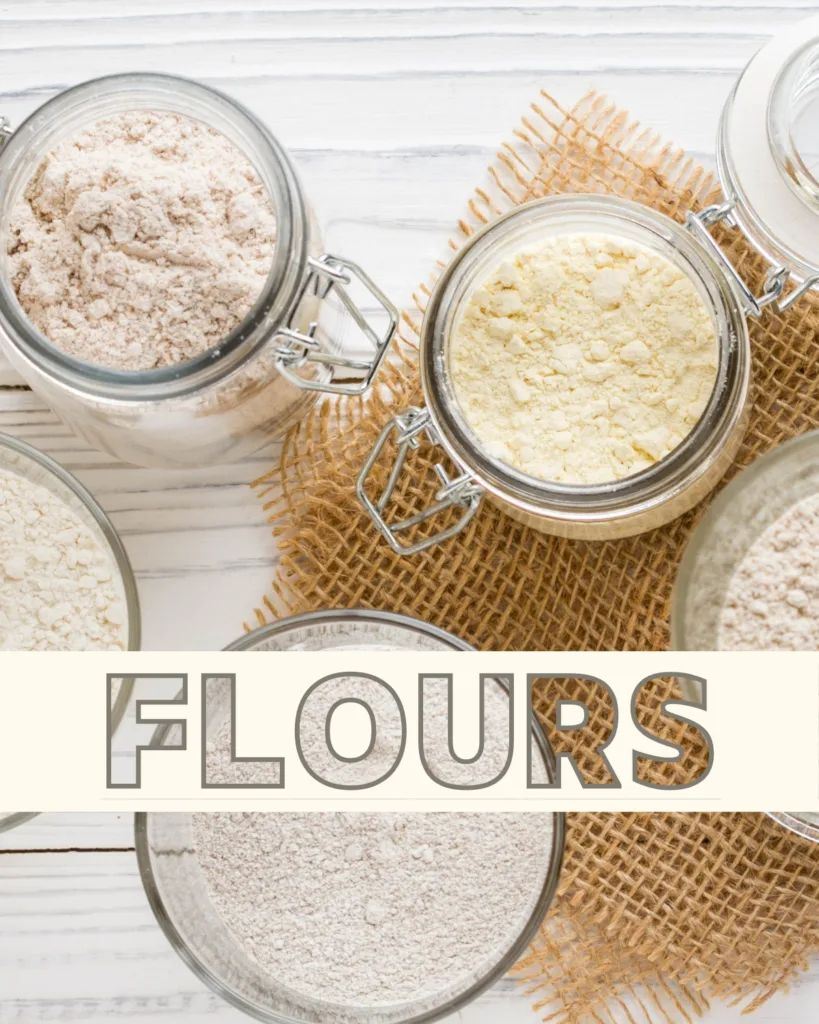
All-Purpose Flour
All-purpose flour is the most versatile type of flour and is commonly used in baking cookies. It is made from a blend of hard and soft wheat, which gives it a moderate protein content. This protein content helps provide structure to the cookies without making them too dense or chewy. All-purpose flour is a good choice for most cookie recipes as it produces cookies with a balanced texture and flavor.
The Different Types of All-Purpose Flour
Here are three common types of all-purpose flour:
1. Bleached All-Purpose Flour
Bleached all-purpose flour is made from wheat that has been treated with chemicals to speed up the aging process. This results in a flour that has a finer texture and lighter color. Bleached all-purpose flour is often preferred for recipes that require a delicate and tender crumb, such as cakes, cookies, and pastries.
2. Unbleached All-Purpose Flour
Unbleached all-purpose flour is made from wheat that has not been chemically treated. It has a slightly higher protein content compared to bleached all-purpose flour, which gives it a slightly denser texture. Unbleached all-purpose flour is a versatile option that can be used in a wide range of recipes, including bread, pizza dough, and muffins.
3. Gluten-Free All-Purpose Flour
Gluten-free all-purpose flour is a great option for individuals who have celiac disease or gluten intolerance. It is made from a blend of different gluten-free flours, such as rice flour, tapioca flour, and potato starch. Gluten-free all-purpose flour can be used as a substitute for regular all-purpose flour in most recipes, but some adjustments may be needed to achieve the desired texture and taste.
When choosing the right type of all-purpose flour for your recipe, consider the desired texture and dietary restrictions. Experimenting with different types of all-purpose flour can help you achieve the best results in your baking and cooking endeavors.
Bread Flour
Bread flour has a higher protein content compared to all-purpose flour, typically around 12-14%. This higher protein content creates more gluten when combined with liquids, resulting in cookies with a chewier and denser texture. Bread flour is often used in recipes that call for a chewy or crispy cookie, such as chocolate chip or oatmeal cookies. However, it’s important to note that using bread flour may make your cookies slightly tougher.
Cake Flour
Cake flour is a type of flour that is specifically milled to have a low protein content. It is made from soft wheat, which has less gluten-forming proteins compared to hard wheat. This low protein content gives cake flour a fine texture and a delicate crumb when used in baking.
Unlike all-purpose flour or bread flour, cake flour is finely ground and has a lower protein content, usually around 7-9%. This low protein content allows for less gluten development when mixed with liquid, resulting in a tender and light texture in cakes and other baked goods.
Cake flour is commonly used in recipes that require a delicate and fluffy texture, such as sponge cakes, chiffon cakes, and angel food cakes. It is also ideal for making tender cookies and pastries.
When substituting cake flour in a recipe that calls for all-purpose flour, you can use a simple conversion. For every cup of all-purpose flour, replace it with 1 cup minus 2 tablespoons of cake flour. This will help achieve a similar texture and crumb in your baked goods.
It’s important to note that cake flour is not suitable for recipes that require a strong gluten structure, such as bread or pizza dough. In these cases, it’s best to use a higher protein flour like bread flour.
How to Make Homemade Cake Flour
Have you ever wanted to bake a delicious cake but realized you were out of cake flour? Don’t worry, you can easily make your own homemade cake flour with just two simple ingredients.
Ingredients:
- All-purpose flour
- Cornstarch
Instructions:
- Measure out 1 cup of all-purpose flour.
- Remove 2 tablespoons of the all-purpose flour and replace it with 2 tablespoons of cornstarch.
- Sift the mixture together several times to ensure that the cornstarch is evenly distributed.
- Your homemade cake flour is now ready to use!
Why Make Homemade Cake Flour?
You might be wondering why you should bother making your own cake flour when you can easily buy it from the store. Well, homemade cake flour has its advantages.
Firstly, it allows you to have control over the quality of the ingredients. You can choose to use organic or locally sourced all-purpose flour and cornstarch.
Secondly, making your own cake flour can be more cost-effective in the long run. Instead of buying a separate bag of cake flour, you can simply make it whenever you need it.
Whole Wheat Flour
Whole wheat flour is made from grinding the entire wheat kernel, including the bran, germ, and endosperm. It has a higher fiber content compared to other flours and provides a nutty flavor to the cookies. Whole wheat flour can be used in baking cookies, but it is important to note that it will result in a denser and heartier texture. It is often used in recipes that call for a more wholesome and nutritious cookie.
Understanding the Different Types of Whole Wheat Flour
Whole wheat flour is a nutritious alternative to refined white flour, as it contains the entire grain, including the bran, germ, and endosperm. It is rich in fiber, vitamins, and minerals, making it a popular choice for those looking to add more nutritional value to their baked goods. However, there are different types of whole wheat flour available, each with its own unique characteristics and uses.
1. Whole Wheat Flour
This is the most common type of whole wheat flour, often labeled as “whole wheat” or “whole grain” flour. It is made by grinding the entire wheat kernel, including the bran, germ, and endosperm. Whole wheat flour has a slightly nutty flavor and a denser texture compared to refined white flour. It is ideal for baking bread, muffins, and other hearty baked goods.
2. White Whole Wheat Flour
White whole wheat flour is made from a different variety of wheat that has a lighter color and milder flavor compared to traditional whole wheat flour. It still contains the bran, germ, and endosperm, but with a lighter texture and taste. This makes it a great option for those who prefer a milder whole wheat flavor in their baked goods.
3. Whole Wheat Pastry Flour
Whole wheat pastry flour is made from a softer variety of wheat, which gives it a finer texture compared to regular whole wheat flour. It is ideal for making pastries, cookies, and cakes, as it produces a lighter and more tender crumb. Whole wheat pastry flour retains the nutritional benefits of whole wheat while providing a delicate texture.
When choosing a type of whole wheat flour, consider the specific recipe and the desired outcome. Experimenting with different types of whole wheat flour can help you achieve the perfect balance of flavor, texture, and nutrition in your baked goods.
Gluten-Free Flours
For those who follow a gluten-free diet or have gluten sensitivities, there are various gluten-free flours available for baking cookies. Some popular options include almond flour, coconut flour, and oat flour. These flours have different characteristics and may require adjustments to the recipe to achieve the desired texture and taste. Gluten-free flours often produce cookies that are more delicate and crumblier compared to traditional wheat-based flours.
Here are some of the popular gluten-free flours that are commonly used in cookie recipes:
Almond Flour
Almond flour is made from finely ground almonds and is a popular choice for gluten-free baking. It has a slightly sweet and nutty flavor, which adds a delicious taste to cookies. Almond flour works well in recipes that call for a denser texture, and it provides a good amount of moisture to the cookies.
Coconut Flour
Coconut flour is derived from dried coconut meat and is a versatile gluten-free option. It has a slightly sweet taste and a light, fluffy texture. Coconut flour absorbs more liquid than other flours, so it is important to adjust the amount of liquid in the recipe accordingly. It also adds a subtle coconut flavor to the cookies, which can be a great addition.
Oat Flour
Oat flour is made from ground oats and is a popular choice for gluten-free baking. It has a mild, slightly nutty flavor and a soft texture. Oat flour works well in cookie recipes that call for a chewy texture. However, it is important to ensure that the oat flour used is certified gluten-free, as oats can sometimes be cross-contaminated with gluten during processing.
When it comes to baking gluten-free cookies, there are several types of flours that can be used as a substitute for wheat flour. Almond flour, coconut flour, and oat flour are just a few examples of the many gluten-free options available. Each flour has its own unique taste and texture, so feel free to experiment and find the one that suits your preferences best.
Final Thoughts on Baking Flours
Choosing the right type of flour for baking cookies is essential to achieve the desired texture and taste. All-purpose flour is a versatile option that works well in most cookie recipes. Bread flour is ideal for chewy or crispy cookies, while cake flour is perfect for soft and light cookies. Whole wheat flour adds a nutty flavor and a denser texture, while gluten-free flours cater to those with dietary restrictions. Experimenting with different types of flours can lead to delicious and unique cookie creations.
You may want to learn about the different Types of Sugars used in baking cookies.
Hope you enjoyed this article and learned something new. It is always my intention to leave you with a little bit of knowledge after reading my posts.
Looking for a new seasonal recipe blog to follow? Explore new recipes on our food blog at Thyme of Season.
